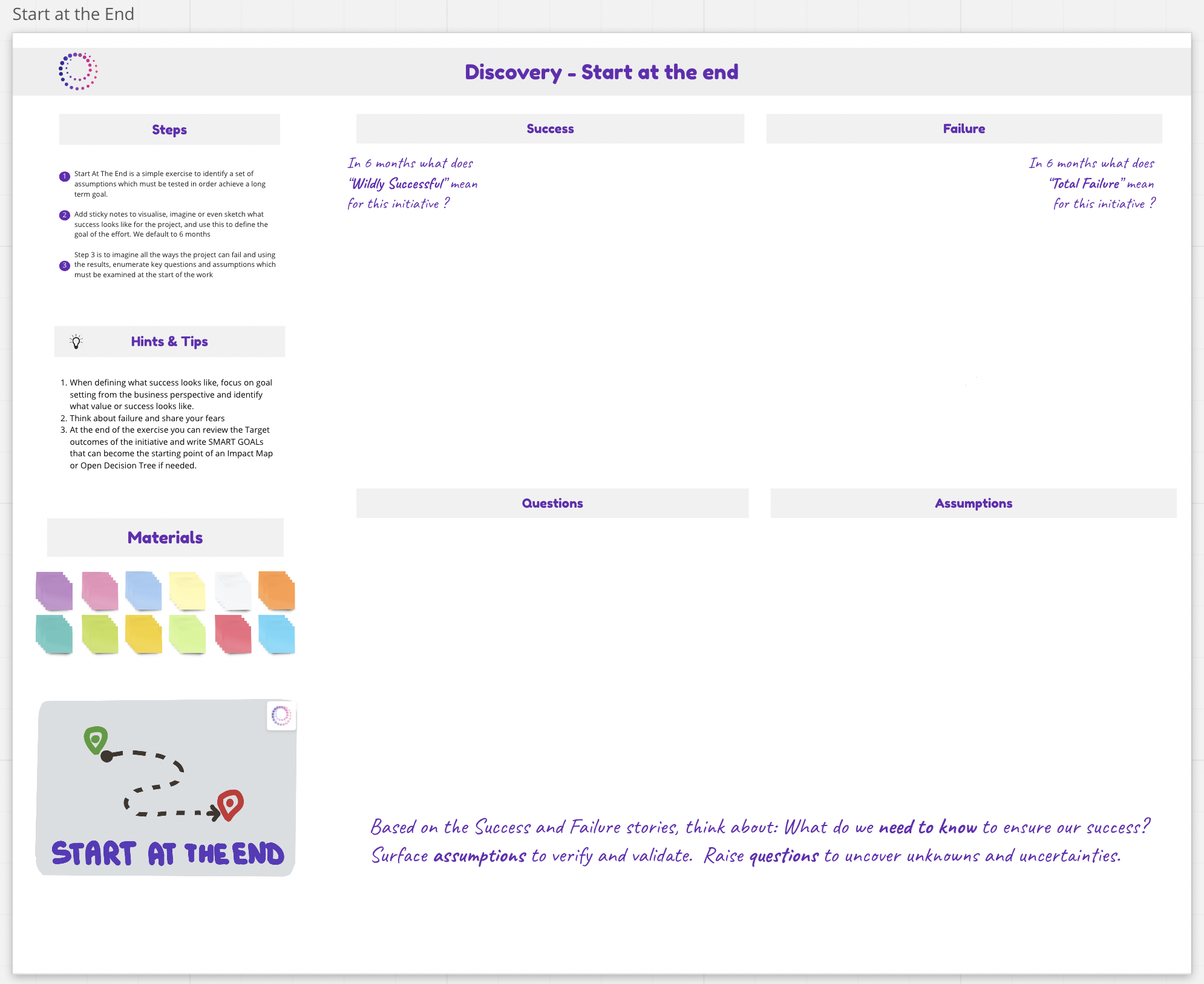Start At The End
Describe what success looks like and use this to define the goal of effort
Justin Holmes
Matt Takane
What Is Start At The End?
Start At The End is a simple exercise to identify a set of assumptions which must be tested in order achieve a long term goal. It's a rather simple exercise, which asks participants to describe what success looks like for their work, and use this to define the goal of the effort. We default to 12 months, but it can be longer or shorter. Then, the exercise asks participants to imagine all the ways their project can fail, and using the results to enumerate key questions or assumptions that must be examined at the start of the work. The technique is derived from Chapter 4 of The Sprint Book. At the end of the exercise, you will have:
-
A shared understanding of your effort's goal.
-
A list of key questions or assumptions that need to be examined early in the work effort in order for the team to achieve the goal.
-
A prioritization of the key questions.
Why Do Start At The End?
-
Most planning activities revolve around juggling a "shopping list of features," as Gojko Adzic calls them in Impact Mapping. Even though the features are delivered, often the business objective is not achieved. Start At The End gives us a light weight approach to put the business value at the center of our work and make sure that assumptions that could lead to failure are clearly identified for examination.
-
Start At The End is really easy and quick to facilitate, but often yields great results. It's a great technique for those new to facilitating workshops or sessions that are short on time.
-
This activity helps you and your team envision what the future will look like when you will reach success.
How to do Start At The End?
Tips
-
When defining what success looks like, it may be helpful to focus on goal setting from the perspective of the customer and business. Identify what value or success looks likes for your customer. Then define what value you are looking to achieve for your business.
-
The technique forces participants to think about failure, which many teams never do. It's surprising how much you can learn about a domain just by getting participants to share their fears.
-
It's easy to communicate the results of the session in slide ware and project rooms. We'd recommend keeping the results up in the project space throughout your effort.
Who do you need?
- Facilitator
- Product Owner
- Project Sponsor, both technical and business
- Architects
Suggested Time
- 1-2 hours. The session can be done without any participant prep.
Difficulty
- Facilitator: Easy
- Participants: Easy
Facilitation Materials Needed
- None required, but 3x5 sticky notes with markers can be useful if you want participants to jot their notes down independently and then present back.
How does it fit?
- Typically done in the Why area of the Discovery of the Open Practice Library
Look at Start At The End
Links we love
Check out these great links which can help you dive a little deeper into running the Start At The End practice with your team, customers or stakeholders.

